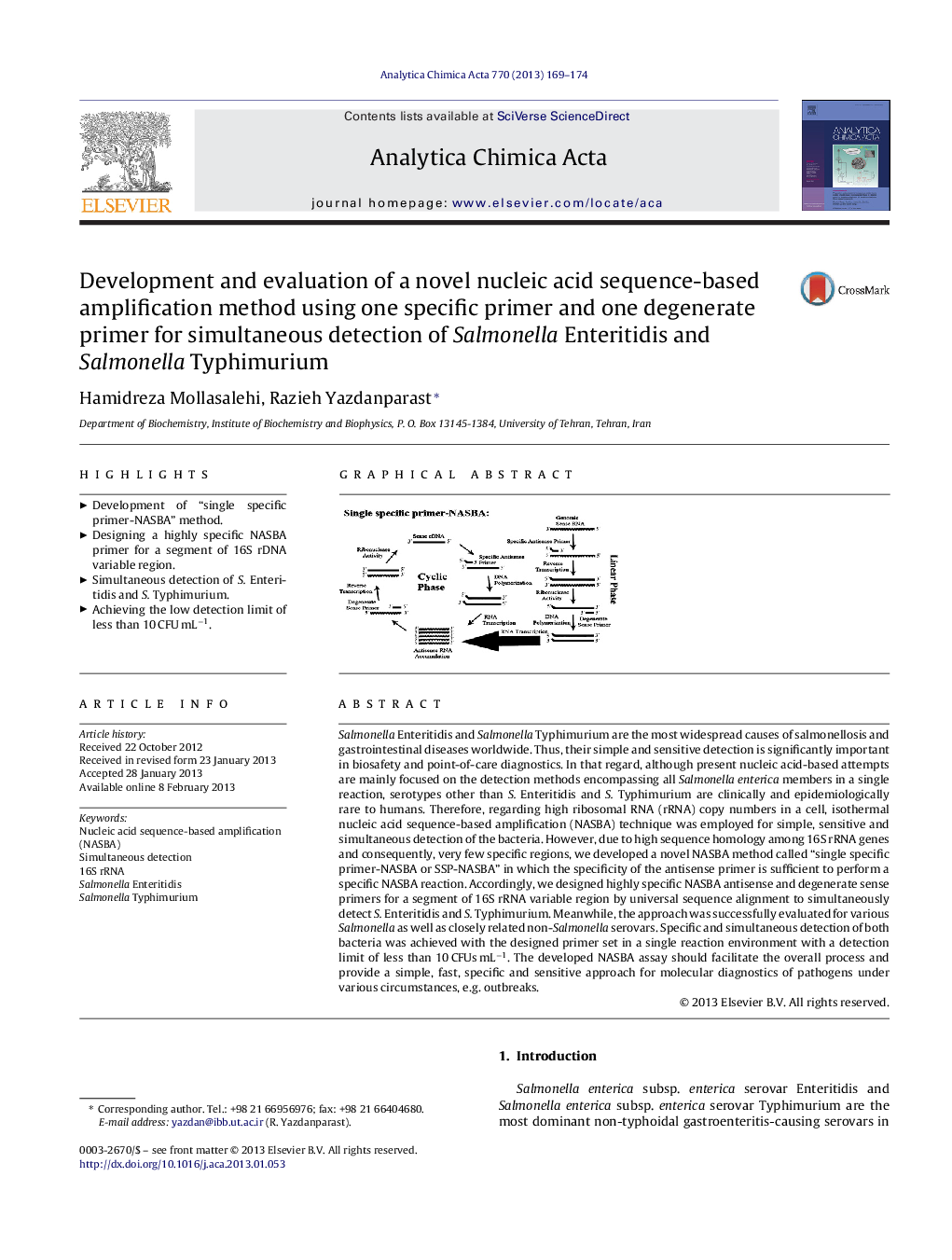| Article ID | Journal | Published Year | Pages | File Type |
|---|---|---|---|---|
| 1165451 | Analytica Chimica Acta | 2013 | 6 Pages |
Salmonella Enteritidis and Salmonella Typhimurium are the most widespread causes of salmonellosis and gastrointestinal diseases worldwide. Thus, their simple and sensitive detection is significantly important in biosafety and point-of-care diagnostics. In that regard, although present nucleic acid-based attempts are mainly focused on the detection methods encompassing all Salmonella enterica members in a single reaction, serotypes other than S. Enteritidis and S. Typhimurium are clinically and epidemiologically rare to humans. Therefore, regarding high ribosomal RNA (rRNA) copy numbers in a cell, isothermal nucleic acid sequence-based amplification (NASBA) technique was employed for simple, sensitive and simultaneous detection of the bacteria. However, due to high sequence homology among 16S rRNA genes and consequently, very few specific regions, we developed a novel NASBA method called “single specific primer-NASBA or SSP-NASBA” in which the specificity of the antisense primer is sufficient to perform a specific NASBA reaction. Accordingly, we designed highly specific NASBA antisense and degenerate sense primers for a segment of 16S rRNA variable region by universal sequence alignment to simultaneously detect S. Enteritidis and S. Typhimurium. Meanwhile, the approach was successfully evaluated for various Salmonella as well as closely related non-Salmonella serovars. Specific and simultaneous detection of both bacteria was achieved with the designed primer set in a single reaction environment with a detection limit of less than 10 CFUs mL−1. The developed NASBA assay should facilitate the overall process and provide a simple, fast, specific and sensitive approach for molecular diagnostics of pathogens under various circumstances, e.g. outbreaks.
Graphical abstractFigure optionsDownload full-size imageDownload as PowerPoint slideHighlights► Development of “single specific primer-NASBA” method. ► Designing a highly specific NASBA primer for a segment of 16S rDNA variable region. ► Simultaneous detection of S. Enteritidis and S. Typhimurium. ► Achieving the low detection limit of less than 10 CFU mL−1.
